|
|
Kleinpanzer Wanze – The Bedbugs of Berlin
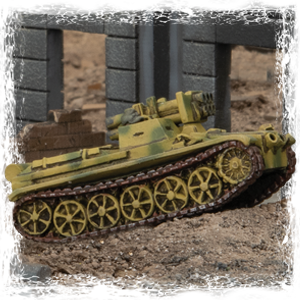 |
Kleinpanzer Wanze – The Bedbugs of Berlin
With Adam Brooker
Berlin German is likely the final chapter for the German late-war Forces in Flames of War, bringing us to the end of the war in Europe, and the Germans are using absolutely anything they can get their hands on to resist. Their factories are running out of men and resources, their vehicles are almost useless due to critical fuel shortages, their planes are running out of pilots, and they are at the bottom of the barrel for man-power, now sending old men and children to hold the line, as they had lost a million men from June to September in 1944. The last gasp of what was once seen as an unstoppable juggernaut was being crushed by two other juggernauts from East and West.
|
|
The Eastern juggernaut, the Soviet Union, with what seemed like inexhaustible manpower and a thirst for vengeance for what the Nazis did during Operation Barbarossa, was rapidly advancing through Eastern Germany and had stopped 60km east of Berlin to prepare for the final assault. The Western juggernaut, the United States, was advancing through and liberating annexed old Europe Nations, with an avalanche of resources and machines, which not only fed their own war machine but the war machines of the United Kingdom and the Soviet Union as well.
|
|
The last aggressive gambits of the Germans had failed, their hopeless offensives Operation Watch on the Rhine (Battle of the Bulge) and Operation Northwind had failed to cut off the Western Allies from their supplies and allow them to be encircled and destroyed, and had cost the German most of their remaining Panzers and mobile forces, as well as most of their remaining airpower. The situation was completely hopeless, and while many German officers were imploring Hitler to seek terms for surrender or armistice, he would hear none of it, and was still clinging to the fantasy of the thousand-year Reich, and failing that wanted to take the German people with him when he fell.
|
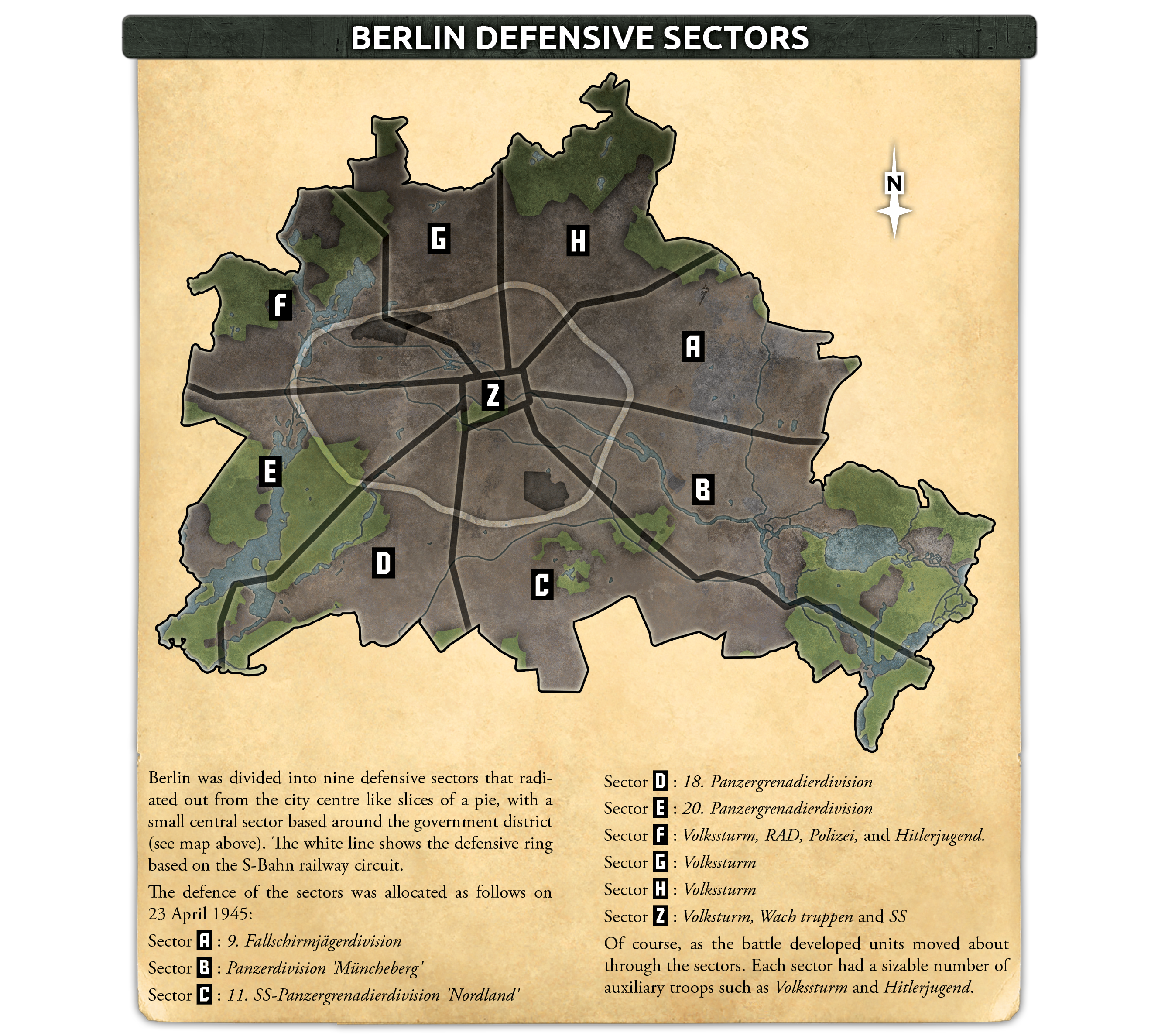 |
|
The defensive sectors around Berlin, April 1945.
|
|
This desperation resulted in some very unusual vehicle and weapon designs, such as the 8.8cm Waffenträger tank-hunter, the Kugelblitz AA Panzer, IR weapons for night fighting, Fliegerfaust multi-barrel ground-to-air rocket launchers, among many others. Some of these worked well, and others were not very successful at all, but in their desperation the Germans were trying to find anything, something, to help slow the oncoming juggernauts. Another of these was the Kleinpanzer Wanze or small-tank bedbug.
|
|
The Kleinpanzer Wanze was essentially an Sd Kfz 301 B IV Borgward Demolition carrier that was converted to carry a frame with six RPzB 54/1 anti-tank rockets, popularly known as Panzerschrecks. Its small size and relatively fast speed (40 km/h) meant that it could be used in close urban combat, to ambush tanks at the short ranges of the Panzerschreck, and then quickly retreat back into cover.
|
|
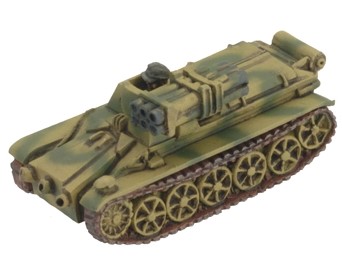
|
|
The A&B variants had a 4-cylinder 49hp engine with only thin 8mm armour, whereas the C variant got an upgraded 6-cylinder 78hp engine, and 20mm of armour. But neither variant would stop much more than a heavy machine-gun or shell splinter, it was just enough to stop small arms as they approached their target.
|
|
In early 1945, some 56 B. & C. Borgward variants were converted into Kleinpanzer Wanze tank hunters, with a crew of 2 (driver and gunner) and 6 RPzB 54/1 Panzerfausts in a swivel mount, and fought against Soviet tanks in the area around Berlin and in-side Berlin itself after the German defences collapsed at Seelow Heights. It also had 3 smoke grenade launchers on the front of the vehicle.
|
|
The crew were often young Hitlerjugend, that doubtfully were very brave, but you would think many would not have survived the destruction of their vehicle. The effective range of the Panzerfaust was only 150m, so they would have to have got almost suicidally close to an enemy tank in order to attempt to hit it. They would then have to retreat to reload once their volley of rockets was released, or they could have fired them individually.
|
|
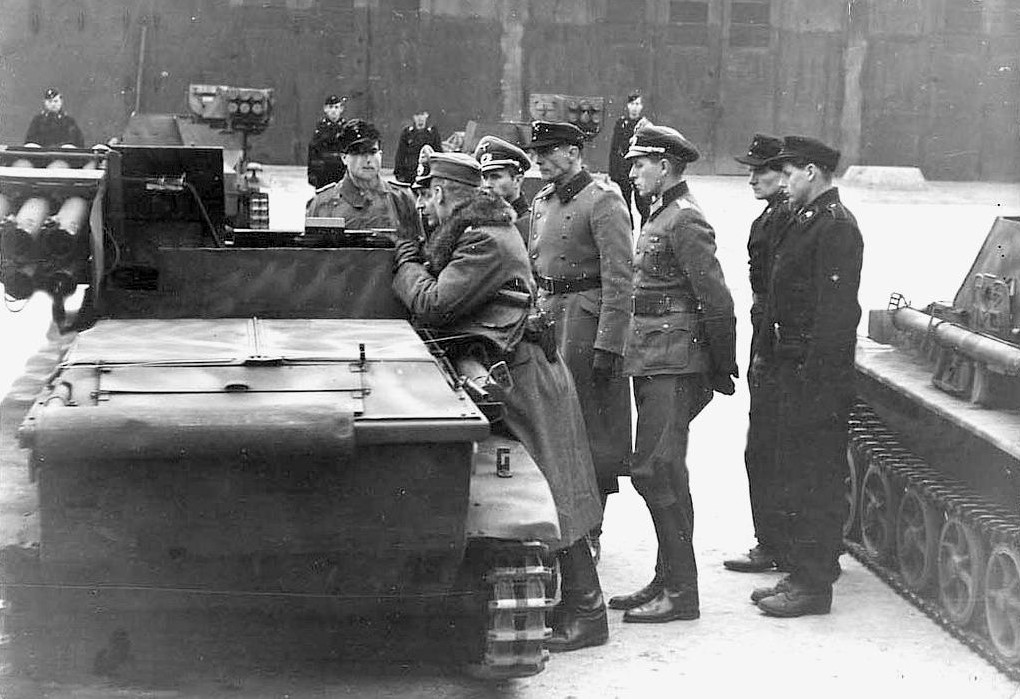
|
| German officers inspecting a Kleinpanzer Wanze unit, the young crew in black stand nearby. |
|
Panzerjäger versuch Abteilung 1 (1st tank-hunter test Battalion), was armed with the Kleinpanzer Wanze and was attached to 11th SS-Panzergrenadier Divison Nordland during the defence of Berlin. This was in sector C, to the South and South East of Berlin and directly in the path of the oncoming Soviets. There are a few pictures of destroyed Bedbugs in the ruins of Berlin but it is not really known how effective they actually were. Their speed and small size did make it easy to conceal and strike from ambush, but you would need to be very brave!
|
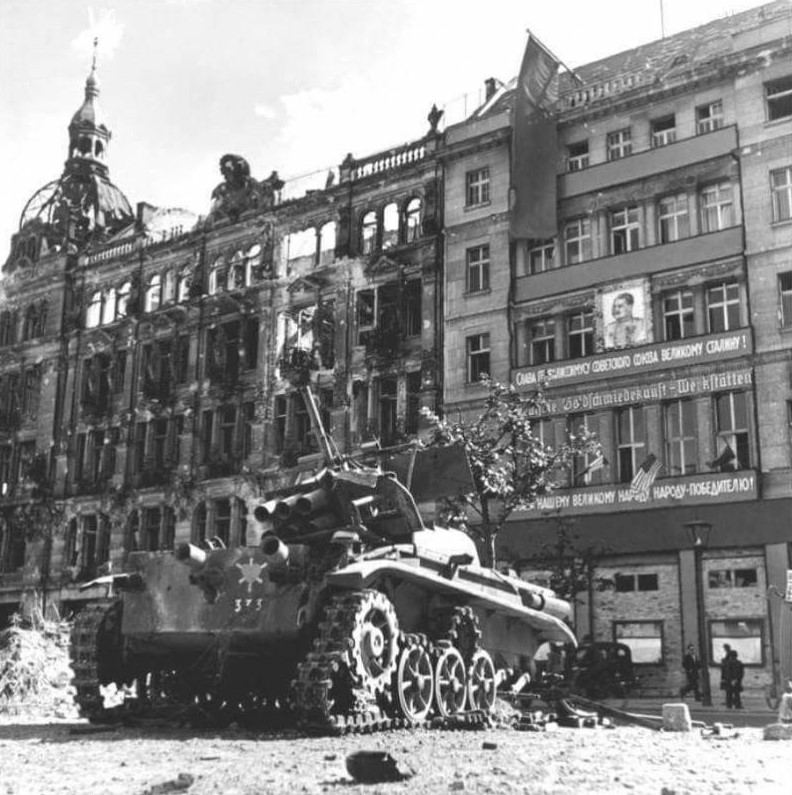 |
|
A destroyed Bedbug left in the streets of Berlin May 1945, in front of an Allied occupied building.
|
|
So, looking at this little unique unit in game, the Bedbugs are taken as a Formation Support unit out of your Force Anti-tank choices, so you can have up to two units of these. They are still careful, so 4+ to Hit, but they still have that Fearless Motivation, so 3+ morale and Last Stand rolls. The only reduced stat from the standard is the Trained Skill of 4+, so you still have your Stormtrooper special rule, but now any Tactics roll like Blitz needs 4+ instead of the normal German 3+.
|
|
Its armour is almost non-existent, but you would expect that given how thin it is, and its movement is reasonable with a 10” movement, but its road dash is less than what you would typically expect, but I think it makes sense given its small size and small engine.
|
 |
|
The weapons ROF is something that seems a bit less than I expected from previous versions, I had anticipated it to be 3/2, instead of 2/1, but it has now lost the limited ammo rule it had previously, so you no longer have a chance to run out of ammo, and then have to wait a turn to shoot again. A unit firing 6 shots on the move is a lot scarier than only 3 shots on the move, but at least you don’t have the usual slow-firing special rule that Panzerschrecks usually have.
|
|
This unit really cannot take much fire, so you will need to use terrain to give you cover and try to use your movement orders to gain extra inches up the board. But they are reasonably cheap, and it's not something that can be ignored given its AT of 11. Keep them back in cover, to threaten any enemy tanks who advance up the board, and be in a position to flank enemy armour if they do advance. Even just one unit will be enough to be an annoyance to your enemy, just like their namesake.
|
|
Just be aware of fast enemy light units, even with something as weak as a machine gun, as they can easily bail, or even destroy you. Even something as weak as an armoured car with a light AT gun will punch holes in you.
|
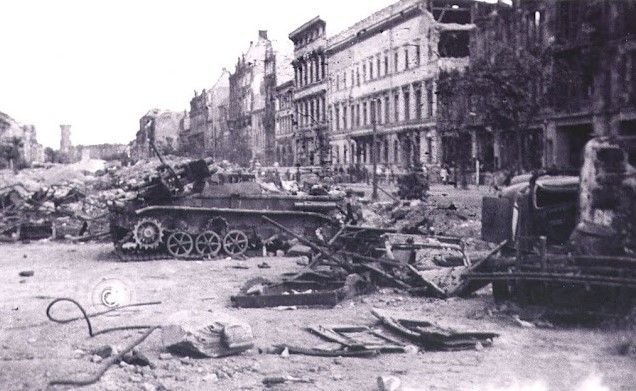 |
| A wrecked Bedbug the rubble of street barricades behind it. Berlin 1945 |
|
To me thematically, these units would be best used in a scenario like Blood on the Streets (page 103) in the Berlin Bulge book, with a cheap infantry formation like the Berlin Battlegroup and some Volksturm or Hitlerjugend platoons. A small Berlin Battlegroup with an HQ and 2 cheap Volksturm platoons could cost as little as 14 points and give you 20 rifle teams with panzerfausts. Swap out some rifle teams for some LMG teams for 2 points and you have even more firepower. Add two platoons of Bedbugs for 10 points and you have quite a hard nut to crack in defence, and still have 75 or so points to spend. A Tiger II could go a long way to help you there!
|
 |
|
This scenario also incorporates fortifications like the Panzerturms, which was a tank turret installed in a street as a hard point. It was either a disabled tank they dug into the street, or a specially designed bunker with ammunition, food, and cramped living quarters to allow the three-man crew to resist while isolated for a long time. These were very dangerous and difficult to destroy positions, that greatly slowed down enemy advances if situated and supported well. The most dangerous ones were the Pantherturms, with the long 75mm gun and strong frontal armour.
|
|
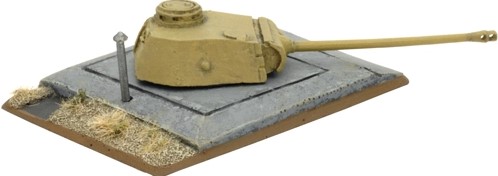
|
|
A street fortification with a Panther turret, called a Pantherturm.
|
|

|
|
This would make a fun and interesting battle, which would re-create the chaos of the Berlin battles.
While the Kleinpanzer Wanze is not a gaming behemoth like the Tiger II, it is one of those weird vehicles the Germans deployed at the end of WW2, which really shows the desperation they must have felt. It’s a great bit of history, and I’m very glad they have brought it out again this time.
Happy Gaming,
~ Adam
|
|
|